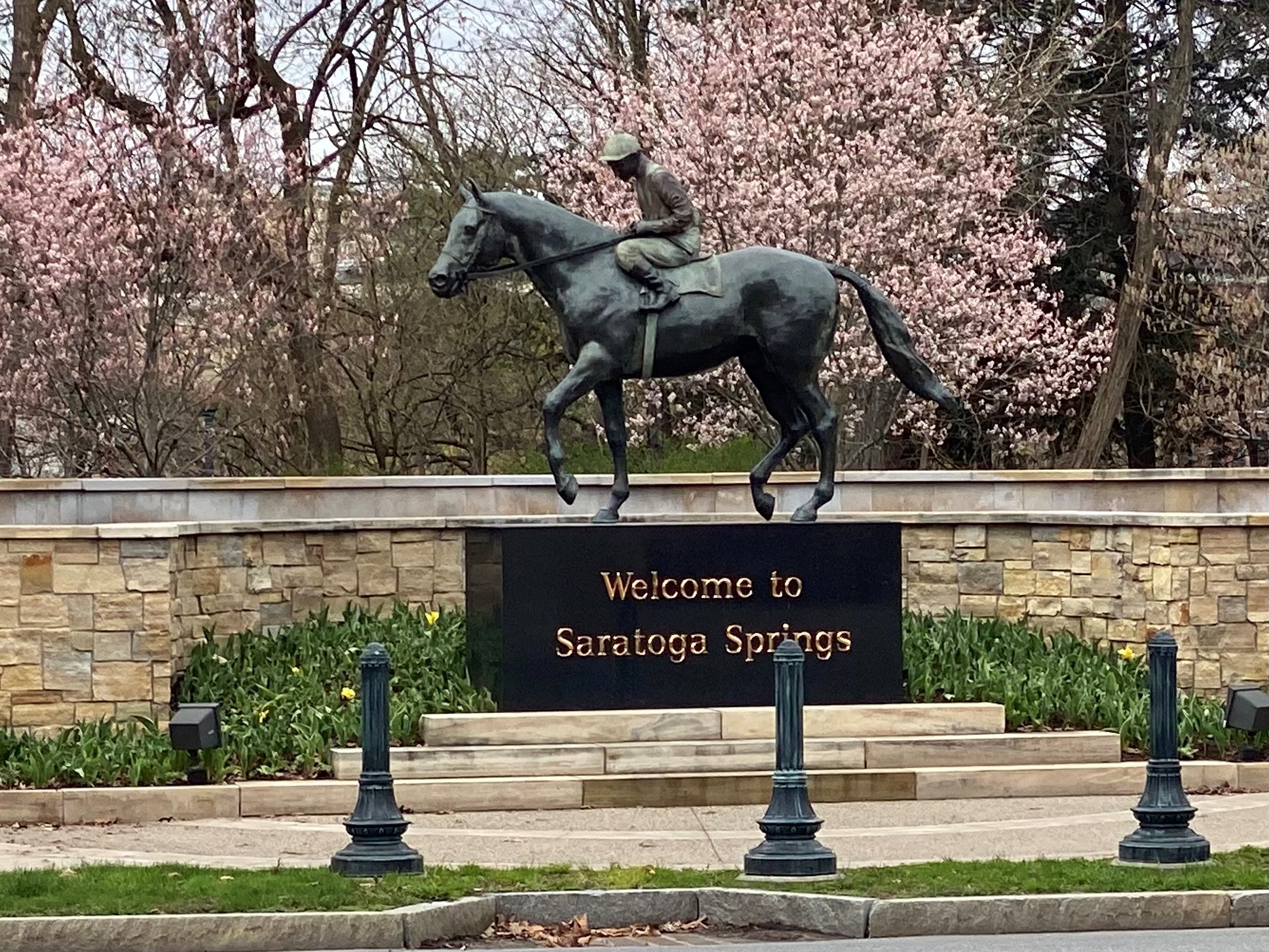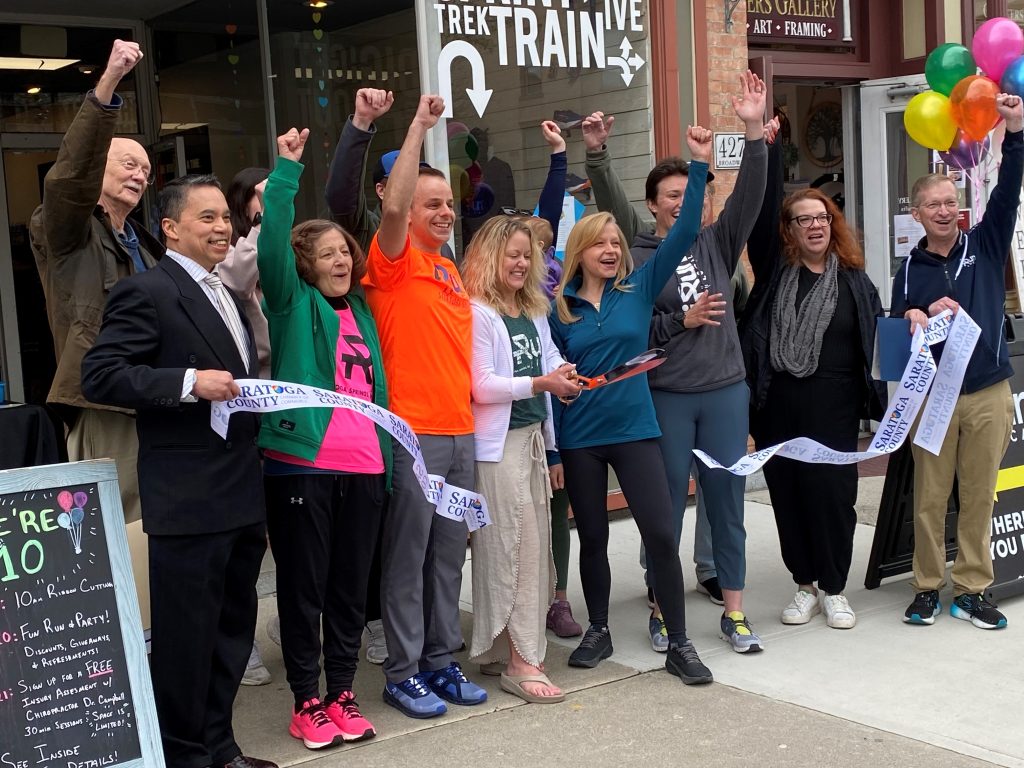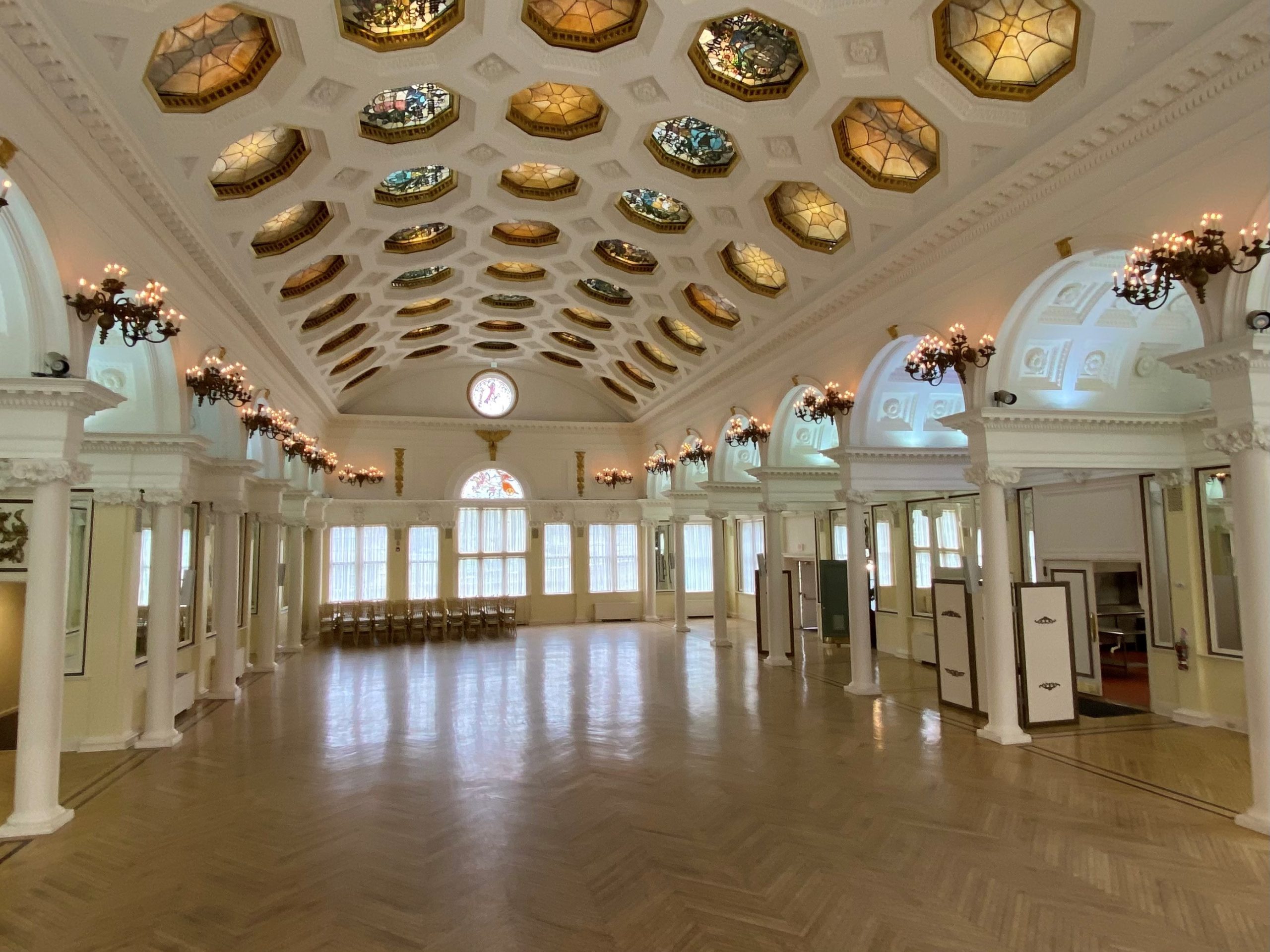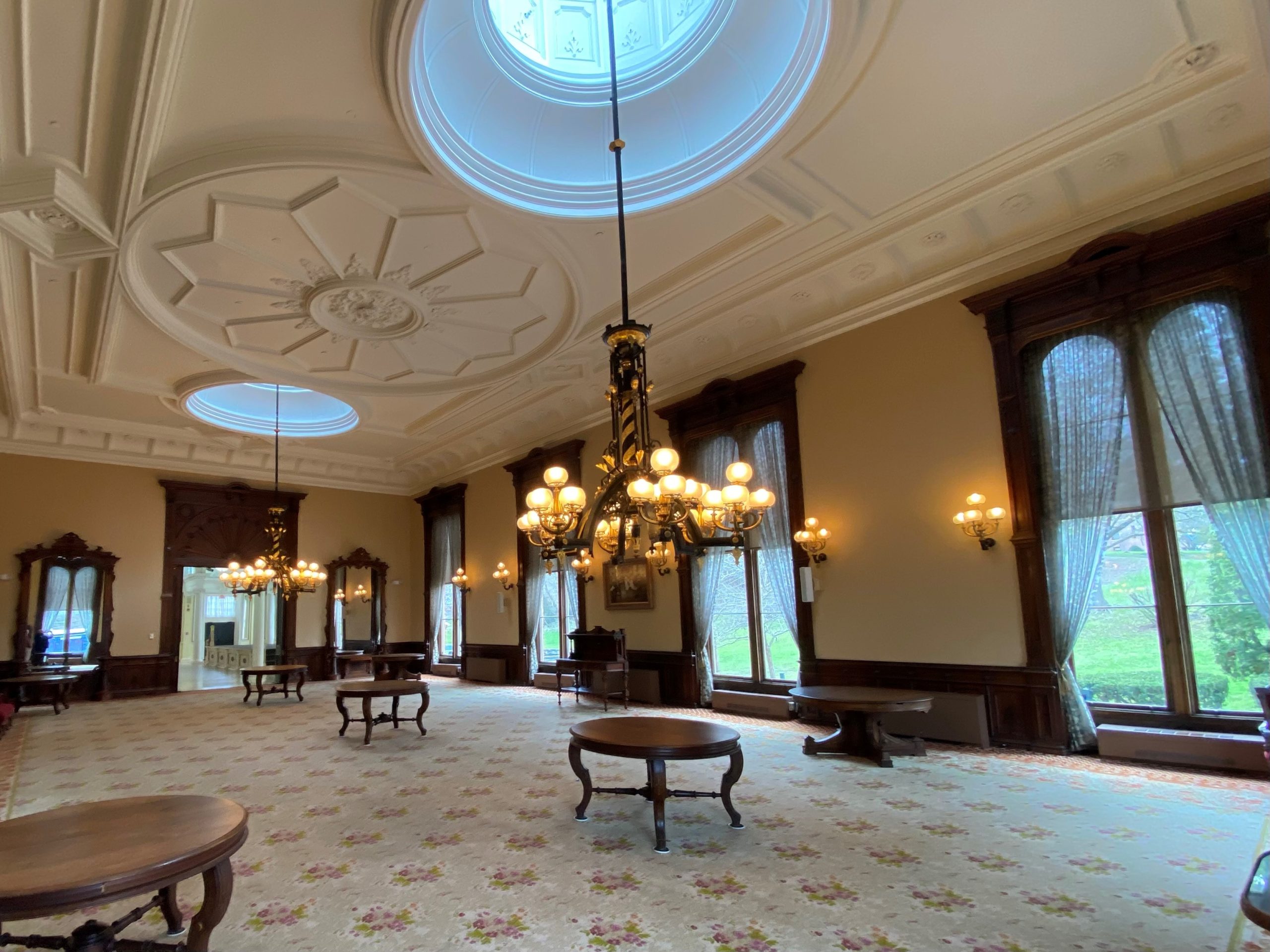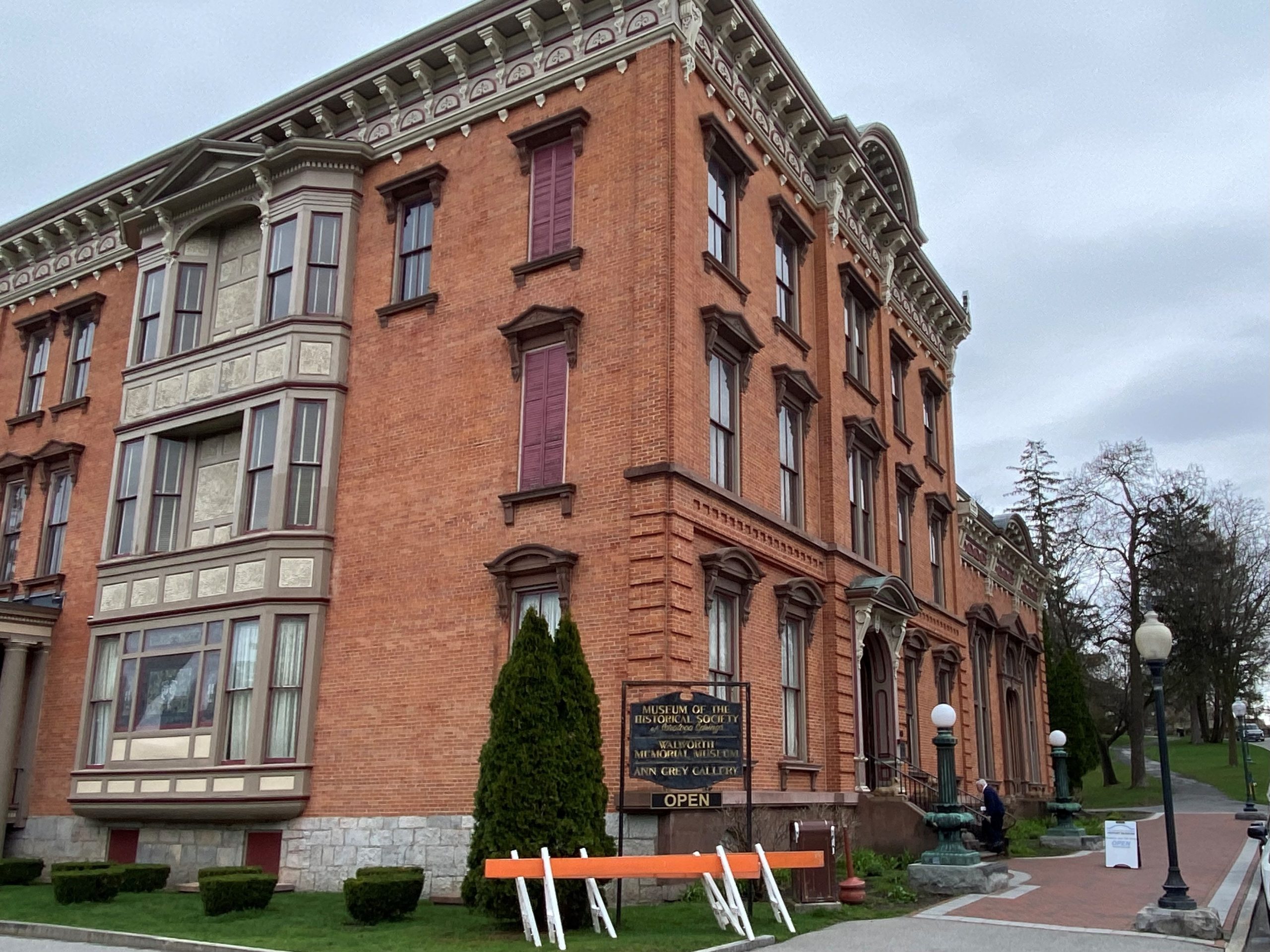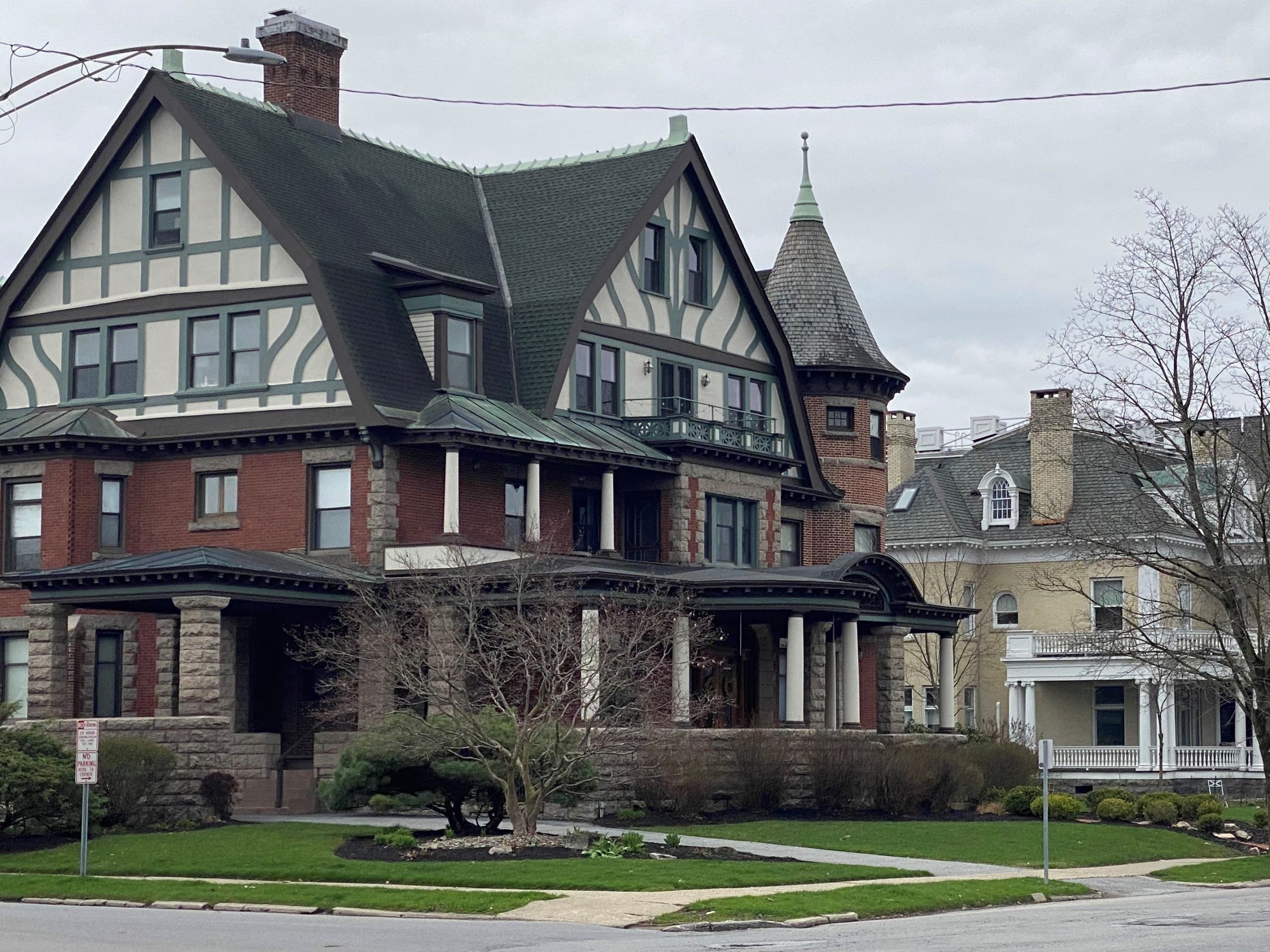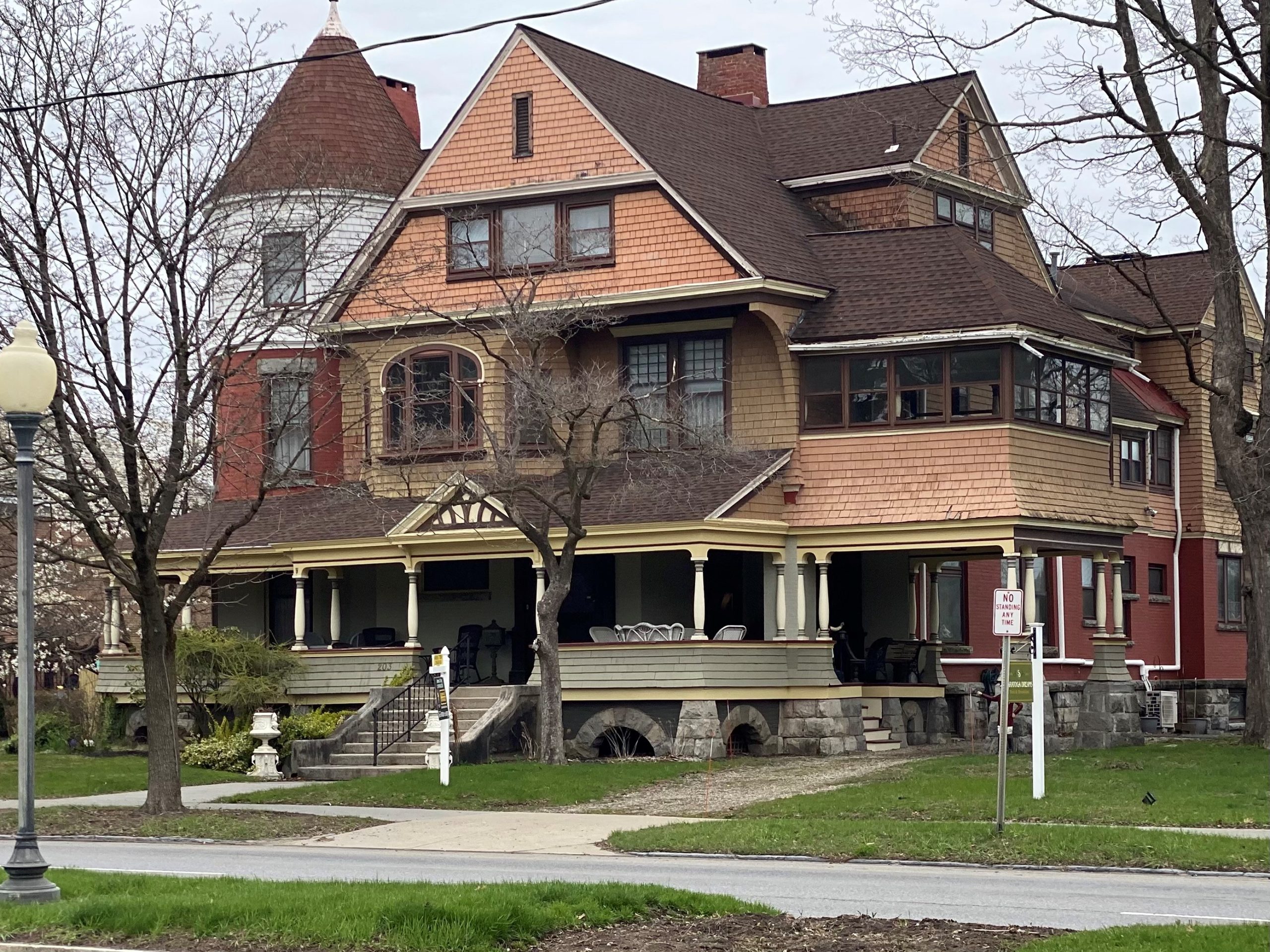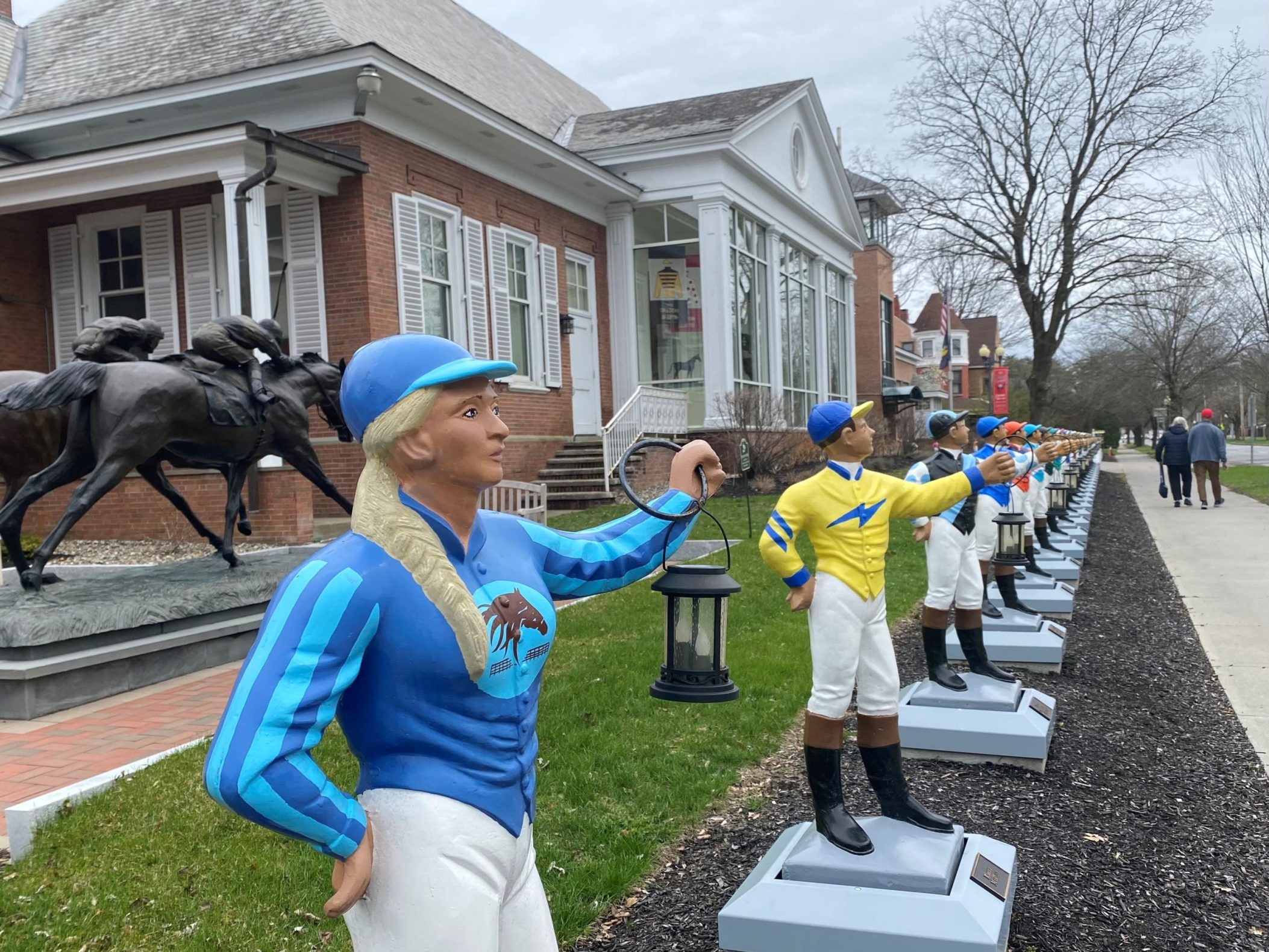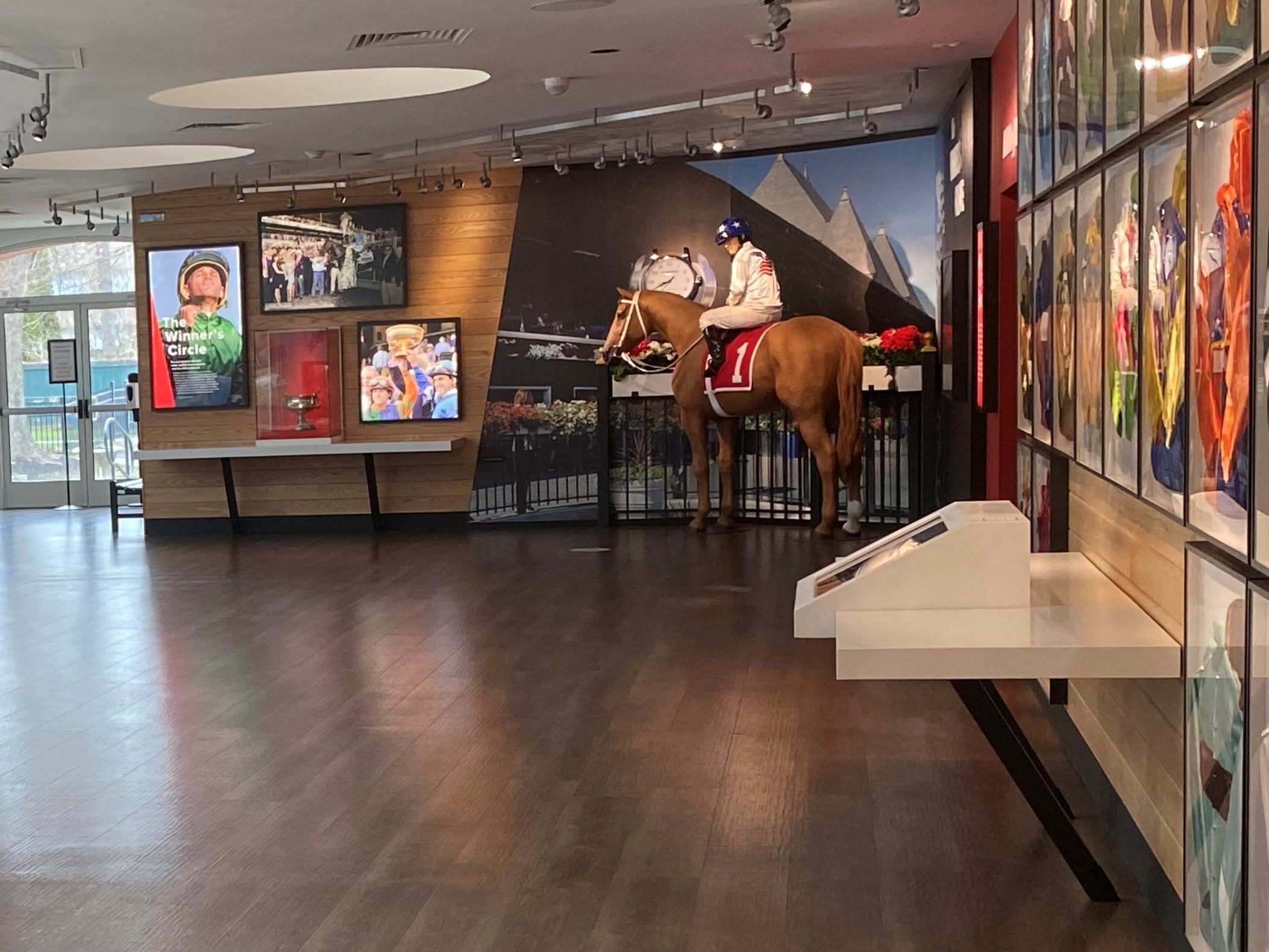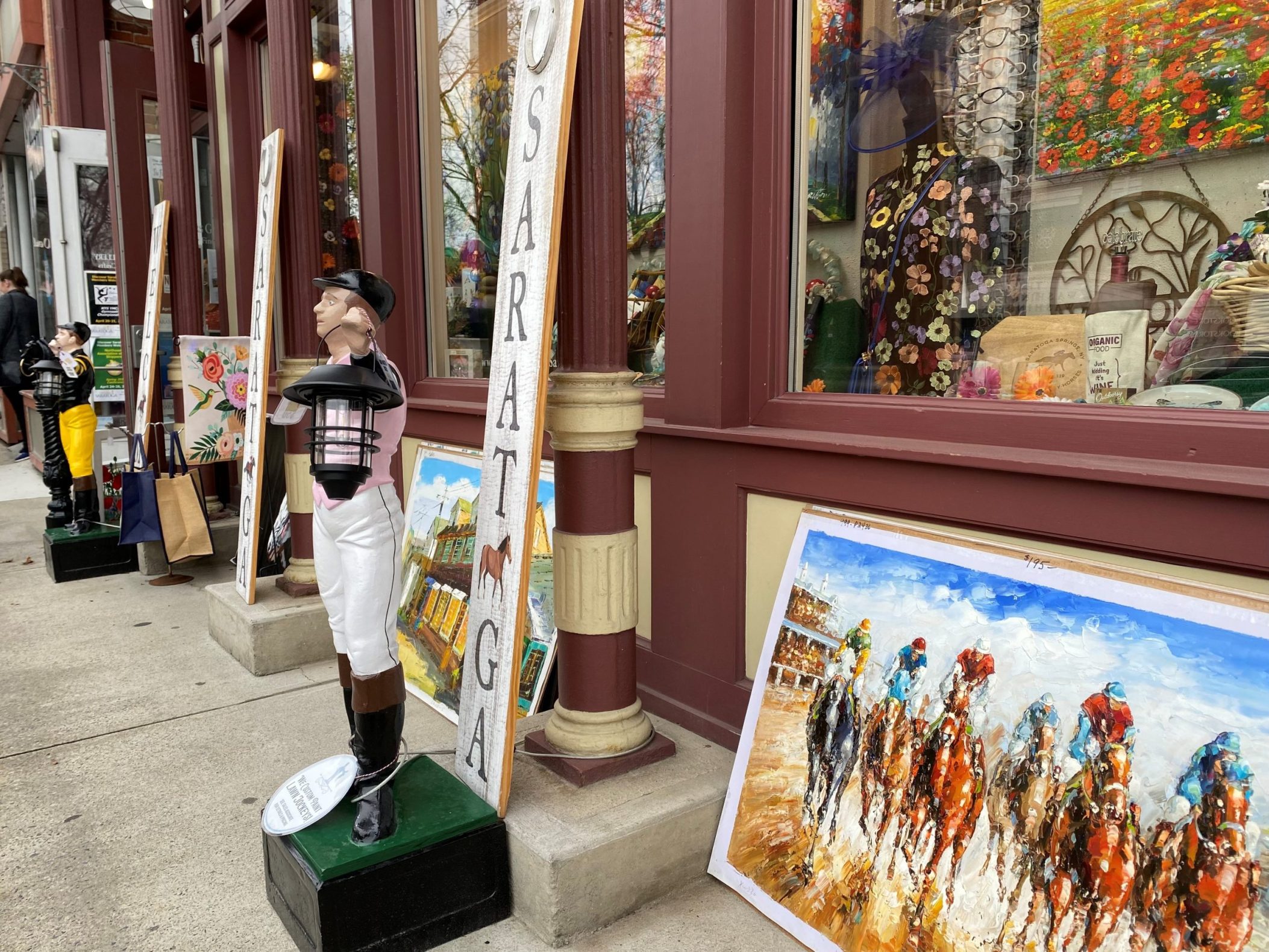Every year Saratoga Springs, NY, welcomes horse fans to its midsummer horse racing season at the oldest thoroughbred racetrack in America. This June, Saratoga Race Course will host an early three day affair, featuring the third and final leg of thoroughbred racing’s Triple Crown, the Belmont Stakes. Fifty thousand racing fans have already ponied up admission for the June 8th race, making it a sell-out. For many residents, this event will be a dry run as the Belmont Stakes will return again for the race and all the accompanying festivities next June. [Belmont Racetrack in Elmont, NY is currently undergoing an extensive renovation.]
The extra fanfare is nothing to this town and its heralded history. For well over two hundred years, Saratoga Springs has been one of the nation’s most popular vacation spots, even decades before the word “vacation” or the notion of a vacation was even “a thing.” In the early 1800s, folks from New York and Boston were drawn to the town because of its purported curative water, discovered hundreds of years earlier by northern New York’s Mohawk tribes. The eventual development of the springs started the trajectory of the locale as a resort. Gideon Putnam, a New Englander, was among the first to settle the area. He was originally drawn to the timber trade, but later found the appeal of the mineral springs and claims of its curative powers to be the area’s real drawing card. In 1802, Putnam built a 70-room hotel, which would eventually morph into one of the grandest guest houses in the United States. In the ensuing years, entrepreneurs would bottle, distribute, and market this newly found elixir. The ripple effects of the commercial venture would eventually bring more settlers and tourists to the bourgeoning town, nestled in the foothills of the Adirondack Mountains.
With the advent of the Industrial Revolution and the proliferation of travel in the middle of the 19th century, New York City gang leader John Morrissey made his way to Saratoga Springs. Morrissey had come to town looking for new opportunities. Not long before his arrival, he’d been charged, but never convicted, in the death of William Poole, aka “Bill the Butcher.” Both Morrissey and Poole had larger-than-life profiles and headed up rival gangs in the rough-and-tumble Five Points neighborhood of lower Manhattan. John Morrissey was an enforcer for the corrupt Tammany Hall political machine. His connections would invariably help him set up gambling houses in the teeming metropolis. He had the experience and now the impetus to be able to run the same kind of business in the Adirondack hamlet.
In the now bustling town, Morrissey began to take a fancy to horses and horse racing. The gambling house would have to wait. He discovered a harness track that was built for the state fair in 1847. Charles Kuenzel, educator and program director of the Saratoga Springs History Museum, takes us back in time. “In 1863 he sold tickets for a dollar. He had eight horses in Saratoga that weren’t pulling something. Everything was at war, so he does head-to-head competitions, and at the end of four days he crowns a winner, and he draws fifteen thousand people.” Realizing his hunch on horse racing was right, he and his partners, among them, William Travers, bought one hundred and twenty-five acres of land across the street from the harness course and build the Saratoga Race Track in 1870. As previously mentioned, Saratoga Race Track is the oldest thoroughbred race course in the United States, and the Travers Stakes is the oldest thoroughbred horse race in the country.
After John Morrissey got the track up and running, he turned his attention to establishing a gaming hall in the center of town. But discretion would dictate the tone of what he would refer to as a “men’s club,” thereby keeping his quasi-legal activities close to his vest. He would also bar local residents, not wanting to wrest away anyone’s hard earned wages, or for them to know that he played a part in turning a family out onto the street. Gilded Age inhabitants and Runyon-esque characters like Diamond Jim Brady and John Warne Gates, among others, were the clientele of the town’s most opulent hotels in Saratoga Springs. They were awash in “new money” with fortunes made, for the most part, during and after the Civil War. It is no wonder that John Morrissey’s basement safe carried a million dollars in currency. To keep himself in good graces among the religious denominations in town, he’d take some of his profits and contribute to the local churches. According to Mr. Kuentzel, he’d say something like, “I’m just a small businessman, I made some extra money, here’s some money, and they would open it up after he left and it would be three times what they needed. So when there was any talk in town about running the gamblers out. The non-profits and churches and almost anybody else said, well he’s a nice guy, let’s give him one more year.”
When not enjoying a day at the races or an afternoon at the spa, the hotels’ wrap around porches were the place to see and be seen. Many of the hotels had grand ballrooms and expansive dining halls, offering three meals a day. Remember Gideon Putnam’s modest turn of the century hotel? Well, in 1872 it had become a 987 room Grand Union Hotel. Composer and conductor, Victor Herbert, was the music director, while John Philip Souza struck up the band down the block at the United States Hotel. While most of the era’s hotels have come and gone, Victorian homes occupy many of the town’s tree-lined streets. Conservation and preservation is the order of the day, and there is an ongoing give and take between Saratoga Spring’s history and its future. Executive Director of the Saratoga Springs Preservation Foundation Samantha Bosshart advised, “We have the only local advisory committee for changes at the Saratoga race course, so anytime the New York Racing Association is doing capital improvements we look at that to make sure it’s a good balance between modernization and preservation, and maintaining that historic character. We understand the historic character is what attracts so many people to Saratoga racecourse but unless it meets modern needs it won’t be economically viable. It’s striking that balance.”
Today, Saratoga Springs is a very walkable town. The track itself is just a short hike from Broadway. As you stride down Congress Street toward the venerable race course, you’ll be welcomed by a phalanx of lawn jockeys, standing shoulder to shoulder in front of the National Museum of Racing and Hall of Fame. It’s a state of the art facility that is both informative and interactive. Brien Bouyea, the museum’s Director of Communications was proud to say, “Obviously we love the hard core racing fans, the people who know all the aspects of the sport, but one of our missions here is we want to expand the sport to people who are just learning about it, or heading to the track for the first time, or they just like horses in general.” Beyond the orientation, the museum conducts tours led by representatives of the horse racing industry. Angel Cordero Jr, one of the sports leading jockeys with over six thousand wins, three of which were Kentucky Derby wins, will be on hand this summer to talk about his career and the exhibits that occupy this year round paean to racing.
There’s clearly a symbiotic relationship between Saratoga Springs and its famous oval, with each tied to each other’s fate. Todd Shimkus who serves as the president and CEO of the Saratoga Chamber of Commerce says that while Saratoga Springs took a gut punch during the pandemic, its resiliency kept it going. This summer the economic forecast appears rosy. ‘’A little less than a mile stretch on Broadway, there is not a single vacancy on the first floor. We are one hundred percent full, and for any community, anywhere, that’s extraordinary. We did nearly one hundred ribbon cuttings in 2023, so some people think that’s all I do.”
In this town, that’s quite a run!
Races, Historic Places, and Wide open Spaces,
The Saratoga Springs History Museum: 1 East Congress St., Saratoga Springs
The National Museum of Racing Hall of Fame: 191 Union Ave, Saratoga Springs, NY
Ulysses S. Grant cottage National Historic Landmark: 1000 Mt. McGregor Rd, Gansevoort, NY
Saratoga Spa State Park: 19 Roosevelt Drive, Saratoga Springs, NY
By Tom Farkas, former arts editor for NY1, docent, and gallery ambassador and photographer of all the article’s photos except where noted.

